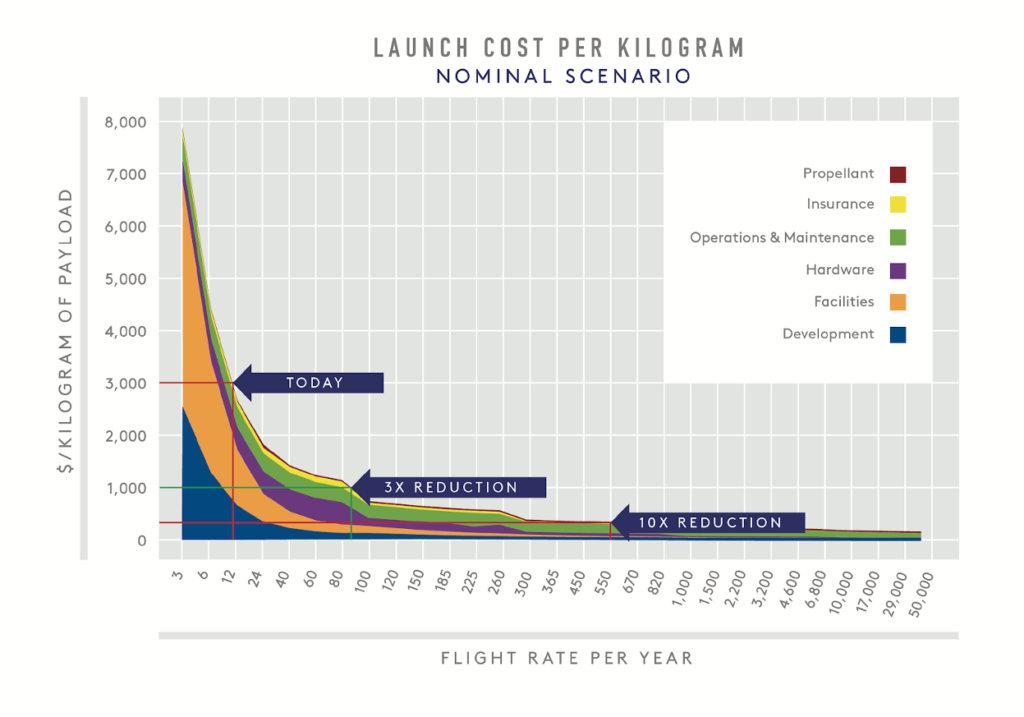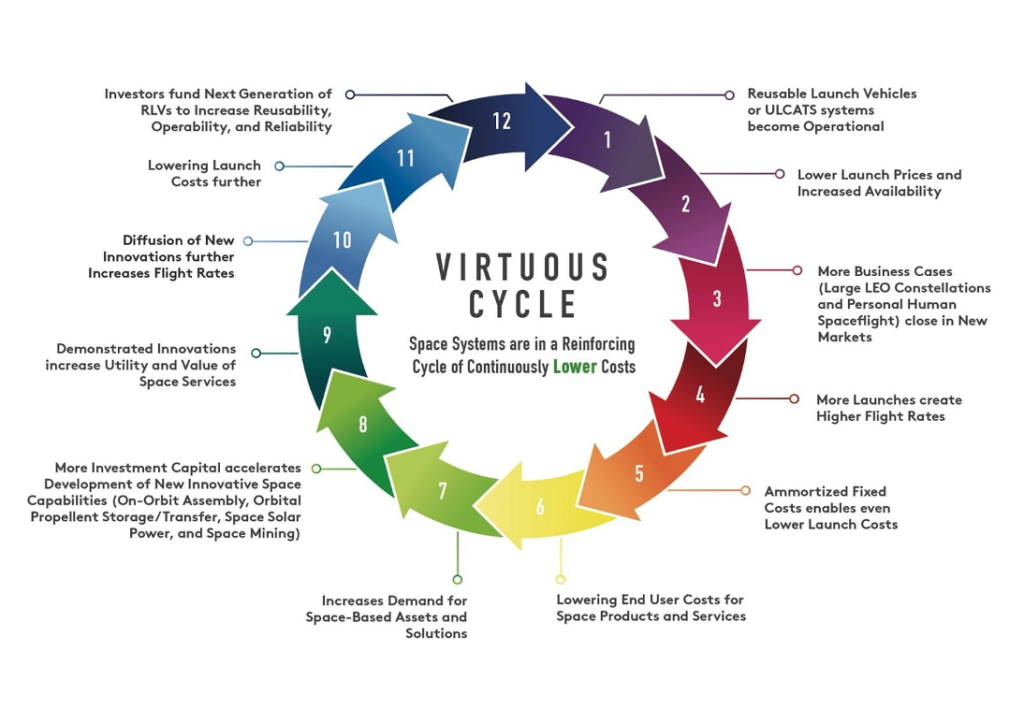July 10, 2021
Lynk is Riding Two Transformational Waves
By Charles Miller
Lynk is riding two transformational technological waves that are changing civilization as we know it. The first is one everybody knows about — Moore’s Law. The second — Cheap Access to Space (CATS) — is a concept that only “space geeks” are familiar with.
When we tell people that we are launching cell towers in space to provide mobile phone coverage for everyone everywhere, we are sometimes asked “If Lynk is such a great idea, why hasn’t it happened before? Why didn’t somebody do this 10 years ago, or 20 years ago?”
The answer is “Moore’s Law.” It is only recently that you could put the power of a supercomputer in something the size of a shoe box, and do so in a cost effective manner. It takes that level of complex computation — inside a cell tower orbiting in space — to process the signals required to connect thousands of phones simultaneously. Given Lynk’s mission to provide continuous global coverage, we require thousands of such cell towers in low Earth orbit. The satellites that provided the required amount of power a decade ago were too expensive. It did not make economic sense. The good news is that Moore’s Law came to the rescue.
Lynk had the foresight to ride this first wave, knowing full well that Moore’s Law would enable us to bring broadband connectivity to everyone, everywhere.
But the first wave, by itself, is insufficient for Lynk to fulfill the full potential of our ambitious mission. Our ultimate goal is broadband to billions of phones simultaneously, everywhere, at ever faster and faster speeds. Nobody should be left behind. This requires thousands of much larger satellites, which exceeds the launch capacity of the entire world and is economically unaffordable.
Fortunately, that second wave is coming in the form of reusable launch vehicles (RLVs) that will deliver CATS. Lynk is in a perfect position to ride this wave as RLVs are rapidly being developed by many commercial space firms. For example, SpaceX has led the way with the partially-reusable Falcon 9, and now is in early flight testing of the fully-reusable Starship. Meanwhile Blue Origin is building New Glenn, Relativity is building the Terran R, Rocketlab is building Neutron, and many others are in development.
The coming impact of RLVs and CATS on the world is still widely unknown and under-rated. The fact is that CATS is already jump-starting a virtuous cycle, leading to technological advances that will be civilization changing.
We can see some of the promise with the development of Starship. Recently, in a shock to everyone, NASA signed a contract with SpaceX to use reusable Starships to return humans to the Moon. The reason NASA chose Starship is that America’s space agency can see the future — Starship will take humans to the Moon at an order of magnitude reduction in cost compared to the traditional approach.
This is just the beginning. In the near future, RLVs are going to move the world from “launches per month” to “launches per day” and Lynk is in a terrific position to ride that wave.
A recent USAF study, “Fast Space: Leveraging Ultra-Low Cost Access to Space for 21st Century Challenges”, takes a deeper look at this emerging technological wave. This USAF study predicted that RLVs will lead to “a 3x reduction of launch costs in less than 10 years and a 10x reduction in decade after”.

The USAF further predicted that much lower costs will jump start demand for even more space launches, leading to more investment in space launch and development of even more efficient and cost effective RLVs. The study predicts this will jump start the virtuous cycle I mentioned above.
The following represents a virtuous cycle fueled by RLVs.

So what does this mean for Lynk?
This means Lynk can launch more, and ever larger, “cell towers in space” for the same amount of money or less. Lynk has known for some time that combining these two waves is critical. For this reason, Lynk has designed our spacecraft for mass production, and to grow in scale to much larger sizes, all within a budget that was impossible to achieve until very recently.
What does this mean for the world?
This means ever faster broadband speeds directly to your mobile phone, everywhere, at ever lower costs to the consumer.
In turn, this means affordable fast broadband connectivity to billions of people who live in rural and remote areas and have little or no access to mobile connectivity.
According to the UN Broadband Commission: “The COVID-19 crisis has dramatically illustrated the vital importance of broadband networks and services in driving robust, resilient and well-functioning societies and economies. Yet today, 3.6 billion people remain offline. Lack of affordability, constrained access to infrastructure and devices, poor digital skills and/or the absence of relevant content mean they, and billions of other marginalized people struggling with poor connectivity, are unable to leverage the power of digital transformation in a way that could catalyze seismic shifts in development outcomes.” Universal and affordable broadband connectivity is a hard problem to solve. Many people have dedicated their lives to solving it. Many others have given up hope.
Moore’s Law, CATS, and satellites are part of the solution.
Lynk is sitting in the center of a transformation in space access. Our satellites are designed to take advantage of the emerging breakthrough in affordable space launch. When SpaceX, Blue Origin, and others move the world from launches per month to launches per day, they will be launching Lynk satellites. Through our satellite network, Lynk has the opportunity to provide economical broadband access to billions of people currently underserved by a lack of mobile connectivity.
Together with our friends and allies, and riding two waves of technological transformation, the future is ours to reshape. We invite you to join us on this journey.